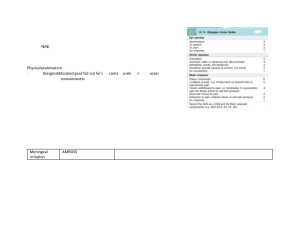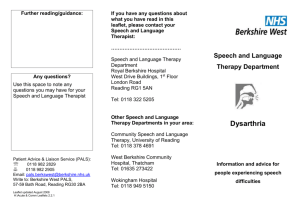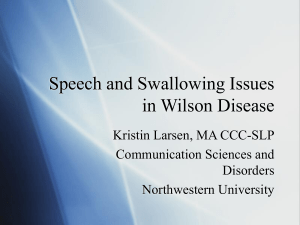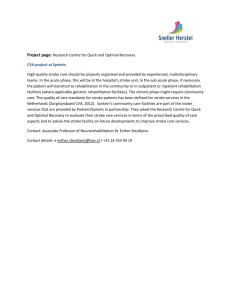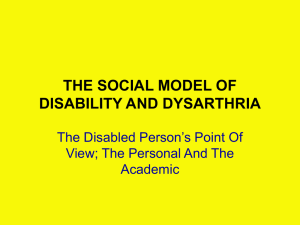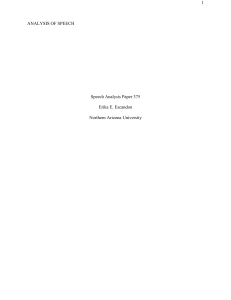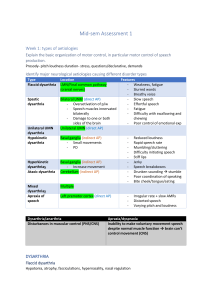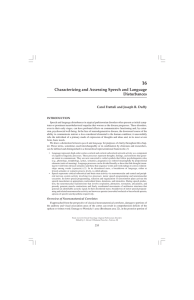CENTENNIAL HONORS COLLEGE Western Illinois University Undergraduate Research Day 2016
advertisement
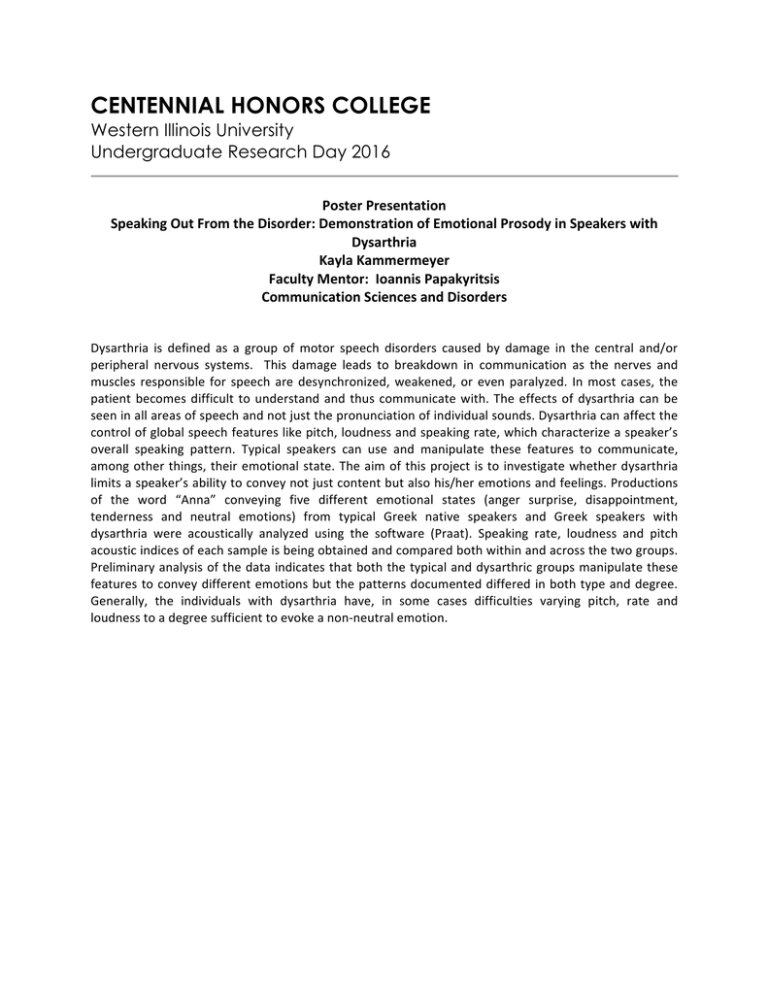
CENTENNIAL HONORS COLLEGE Western Illinois University Undergraduate Research Day 2016 PosterPresentation SpeakingOutFromtheDisorder:DemonstrationofEmotionalProsodyinSpeakerswith Dysarthria KaylaKammermeyer FacultyMentor:IoannisPapakyritsis CommunicationSciencesandDisorders Dysarthria is defined as a group of motor speech disorders caused by damage in the central and/or peripheral nervous systems. This damage leads to breakdown in communication as the nerves and muscles responsible for speech are desynchronized, weakened, or even paralyzed. In most cases, the patient becomes difficult to understand and thus communicate with. The effects of dysarthria can be seeninallareasofspeechandnotjustthepronunciationofindividualsounds.Dysarthriacanaffectthe controlofglobalspeechfeatureslikepitch,loudnessandspeakingrate,whichcharacterizeaspeaker’s overall speaking pattern. Typical speakers can use and manipulate these features to communicate, amongotherthings,theiremotionalstate.Theaimofthisprojectistoinvestigatewhetherdysarthria limitsaspeaker’sabilitytoconveynotjustcontentbutalsohis/heremotionsandfeelings.Productions of the word “Anna” conveying five different emotional states (anger surprise, disappointment, tenderness and neutral emotions) from typical Greek native speakers and Greek speakers with dysarthria were acoustically analyzed using the software (Praat). Speaking rate, loudness and pitch acousticindicesofeachsampleisbeingobtainedandcomparedbothwithinandacrossthetwogroups. Preliminaryanalysisofthedataindicatesthatboththetypicalanddysarthricgroupsmanipulatethese featurestoconveydifferentemotionsbutthepatternsdocumenteddifferedinbothtypeanddegree. Generally, the individuals with dysarthria have, in some cases difficulties varying pitch, rate and loudnesstoadegreesufficienttoevokeanon-neutralemotion.
